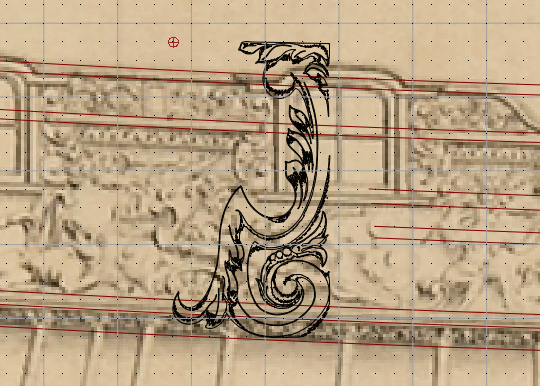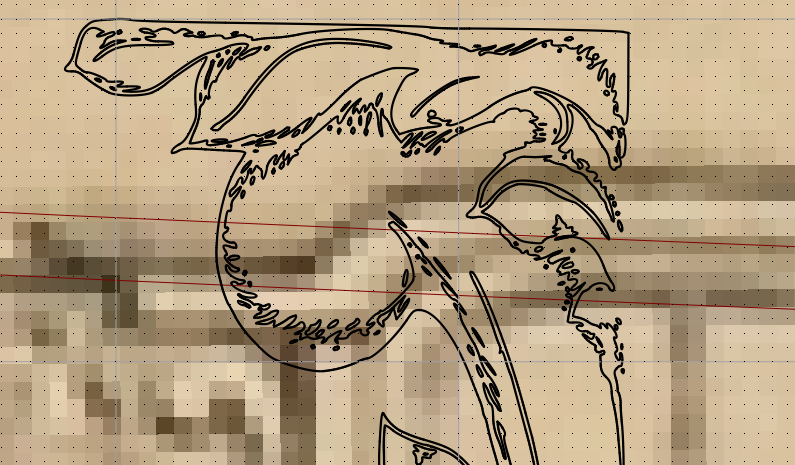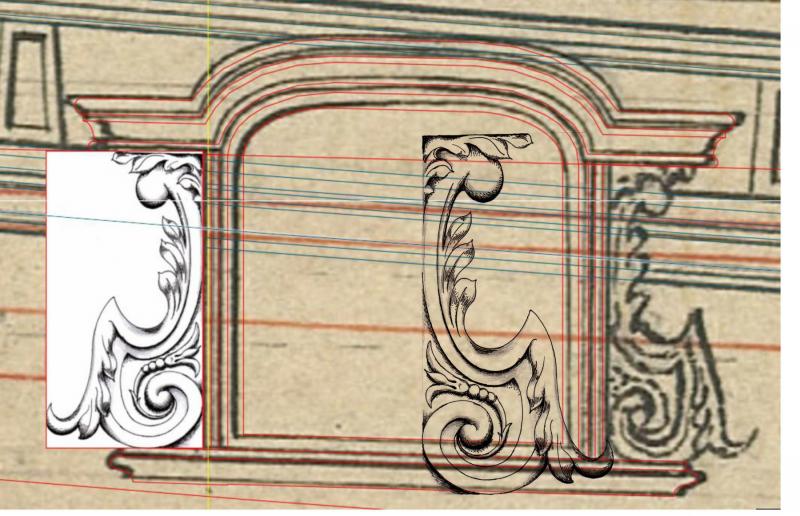
FatFingers
-
Posts
29 -
Joined
-
Last visited
Content Type
Profiles
Forums
Gallery
Events
Posts posted by FatFingers
-
-
Always good to hear there is another HMYRC build in the pipeline.
The plans for her are available from the Royal Museum Greenwich.
https://collections.rmg.co.uk/collections/objects/459289.html
There were five sets when last I looked.
- Jeronimo, mtaylor, Elmer Cornish and 1 other
-
 4
4
-
-
Strictly speaking 'french polishing' is a technique for applying shellac based finish to wood which involved a pad of cloth saturated in the shellac solution.
A great deal of antique furniture was finished with shellac rather than varnish, originally varnishes being made from turpentine and amber.
Shellac is a naturally occurring plastic that dissolves in methanol - the solvent used is methylated spirits, so use in a well ventilated area - and because it is solvent based when a new layer is added it partially dissolves the previous coat and flows into it - so that there is not really one layer upon another, if you see what I mean. I can attest to its finish being superb, I've used it on a mahogany guitar and a number of other things. The guitar was finished with grain filler to stop the finish sinking into the end grain, then sanding sealer (which was another shellac solution with ground up pumice as a very fine filler) That was flatted of with 1000 grade wet and dry and then a couple layers of final shellac/french polish. The result was like glass. I have always applied the finish with a brush, never actually the proper french polishing technique.
Also, shellac is know to be neutral with most other finishes, it doesn't react with them and craze for example, hence why it is used for sanding sealers.
- DelF, Jim Rogers, mtaylor and 1 other
-
 4
4
-
Remarkable work, truly stunning. Regarding the hollowing of the hull showing the ribs. We used to call it the lean horse look. It is an efect specific to welded hulls and didn't appear on older riveted ships. I don't know enough of Yamato's history to know how she was constructed, Iowa was welded for example so they may have done the same for Yamato. To show what I mean there are some very good photograghs of HMS KGV in dry dock at Liverpool after she collided with and cut in half HMS Punjab which don't show the lean horse ribbing etc. on a contemporary riveted hull.
-
Hi Greg,
Excellent work your doing on Yamato. Regarding tweezers, try looking for some that are intended for electronic surface mount work. Some of the devices, resistors and capacitors, come in packages that small, an 0603 package is 0.6mm x 0.3mm for example. There are smaller packages too.
-
Linden, Lime and Basswood are members of the same tree species, Tilia. They were the favorite wood for carving used by Grinling Gibbons who's work, though on a larger scale, was breathtaking. See http://collections.vam.ac.uk/item/O59271/carving-gibbons-grinling/
for example.
-
-
Hi Mark,
Tiffs, BMPs or JPEGs should be useable as intermediate formats to use with Inkscape conversion. TIFF's and BMP's can be very big though. There would be no need to set white to transparent. See below, two screen grabs from my very cheap CAD program - it's certainly not AutoCAD. Produced after importing into Inkscape, tracing bitmap (under the Path menu) and importing into the CAD program. (I have a passing fascination with the HMYRC, you might notice.)
-
-
Hi Mark,
Bitmap (probably more correctly termed raster formats) image formats represent the image as a fixed grid of pixels with a colour component per pixel, and possibly transparency which is the apha channel. Drawing formats, like CAD formats and SVG (Scalar Vector Graphic), represent the image/drawing as a series of primitives, lines, curves etc. As you scale a bitmap image it will become pixelated, while a drawing will simple redraw, accurately, at larger resolution; zoom in to a CAD drawing as compared to zooming in to a digital photograph.
The example was done in GIMP. There is an option under the color menu item for 'color to alpha'. Using white as the color to treat as alpha/transparency produces that effect. GIMP has it's own file format, so you have to export the image as something like a PNG which will include transparency. JPG will not allow transparency.
Because your carving drawings are black and white (or nearly) Inkscape may be able to do a good conversion from the formats produced by your scanner to SVG, if your scanner doesn't produce SVGs anyway (would depend on how expensive, if it can do things like character recognition for example). There are also online converters but you might have to pay.
Also, JPG format is lossy, that is to say it uses compression that loses detail; whilest PNG is loss less, it uses compression that does not lose detail.
Hope I've been of help.
-
It would depend on what your image format is from the scanner. With a number of the image editing programs you can set a particular colour to transparent. (Try Gnu Image Manipulation Program, GIMP - I know awful name, but it is a good program). Something like that may be what you are looking for and would work for the bitmap type formats. You'd have to save it in the correct format as well, JPGs don't do transparent, PNG's and BMPs do. If you want a drawing rather than a bitmap try Inkscape. Import from your scanned image and convert to SVG. The drawings of the carvings would then be scalable as well. I think most CAD software should be able to deal with SVG's now.
Hope you don't mind my attempt at a quick example.
-
"The top part of my body is now wider than the bottom part!"
I know the feeling, got to 40+ and developed a distinct tumblehome.
I'm looking forward to the first Victory build logs on MSW.
- gjdale, chris watton, trippwj and 3 others
-
 6
6
-
A quick search on Google has turned up another painting by Cleveley of HMY Royal Caroline.
https://www.bonhams.com/magazine/16555/
The text also makes mention of yet another painting in the Victoria Art Gallery, Bath. Not sure if you have seen these.
The painting listed by Bonhams does show a red chimney too, but I can't make out the deck colour.
Relative to the original question, there was a floor covering used during the 19th century called floorcloth or oilcloth. This consisted to canvas with linseed oil based paint troweled on so that the canvas became saturated. Sometimes patterns were printed on top. It was waterproof and hard wearing. I'm not sure how far back production of floorcloth goes, but it went out of favor in the late 19th century as linoleum became the floor converging of choice other than carpet. However, Nairn's, the linoleum manufacturer, used to claim everyone from paupers to the Tsar's royal yacht used their floorcloth.
-
-
The curious object at the bow is for attaching the paravane. See
https://en.wikipedia.org/wiki/Paravane_(weapon)
and
https://en.wikipedia.org/wiki/File:HMS_Glatton_in_drydock_IWM_SP_2083.jpg
- Canute, Old Collingwood, RGL and 1 other
-
 4
4
-
-
The closest image I could find that shows the handedness of screws on a contemporary of Dreadnought is this image of HMS Malaysia at Invergordon:
http://www.theinvergordonarchive.org/picture/number1356.asp
I think it confirms Jim Lad's information.
(posted a link rather than the image because of copyright concerns.)
-
Looking good Jim, HMS Hood was a very handsome ship. You say "After that I will paint the entire hull in a PVA-water mix to strengthen the planking." I've always heard that PVA will not bond to set PVA, unlike hide glues, so that might make your idea problematic. I don't know what others experiences with this are though. See here for example: http://antiquerestorers.com/Articles/jeff/repairing_furniture_joints.htm
"Unlike hide glue, PVA glue does not re-bond to itself so you must scrape off the old glue to bare wood."
-
Nice work Paul, and thanks for the pictures of Victory. They are new, post repaint images of her in her Trafalgar colours. I think she looks really good.
-
An article that might be of interest. https://en.wikipedia.org/wiki/SS_Nomadic_(1911)
The Nomadic is the only remaining White Star Line steamship, she was built in 1911 as tender for Olympic. She has recently been restored, including an attempt at the ever problematic White Star tan for the funnel.
Excellent work you're doing.
-
-
Curiously, the figure head may represent Hercules who was often depicted wearing a lion skin and wielding a club. http://en.wikipedia.org/wiki/Hercules
-
Hi Chris,
Your work is impeccable. I've been contemplating getting HMS Vanguard for a while, just concerned I'd be able to do it.
For future projects would you consider HMY Caroline, it would be wonderful to have a kit that did her justice. I've been tempted by the Panart kit however I think the castings let it down (I know, suggestions that I should do them myself! I can plank hulls but carve figures! They just look like balloon animals) and if the AOT book is correct then the castings for the decorations are a big let down.
Regards




Amati 1:64 HMS Victory - LATEST NEWS
in Wood ship model kits
Posted
Chris Watton's older post about his model of HMS Victory with Amati is here
It's not only about Victory, includes some temping other models, including a very brief teaser about HMS Bellona.